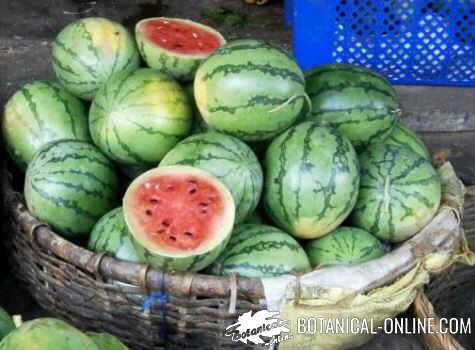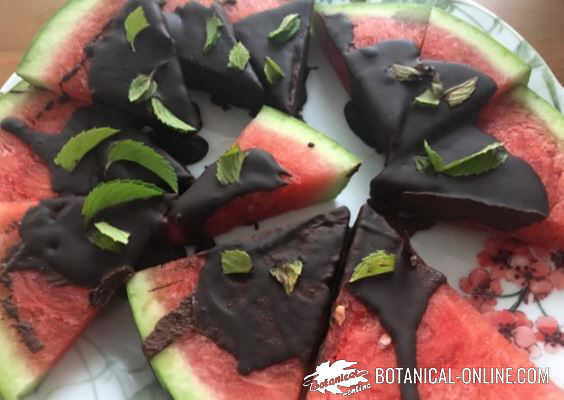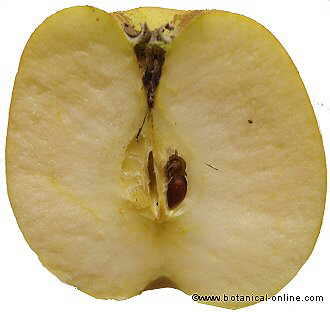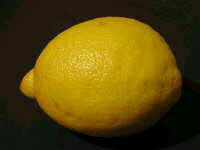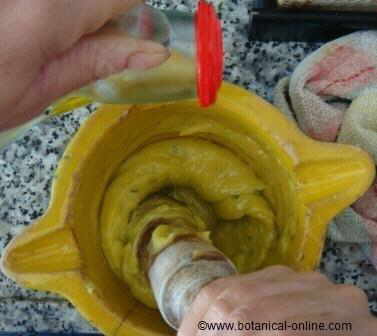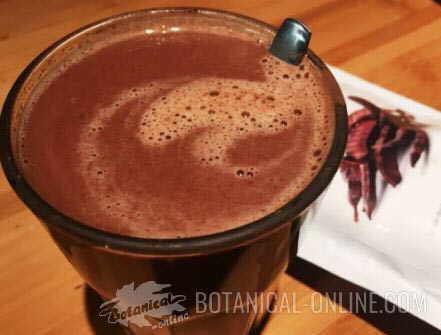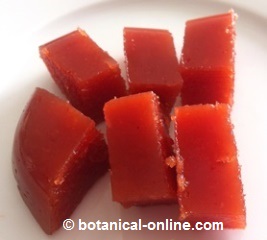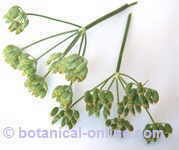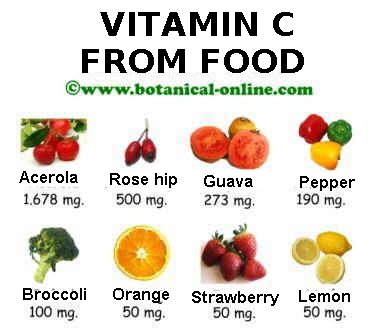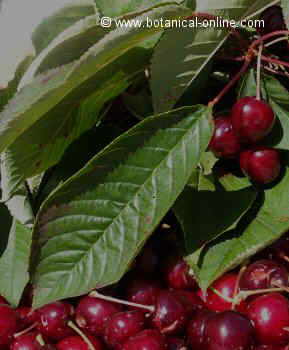Contents
What are watermelon for?
What is watermelon?
Watermelon (Citrullus lanatus var. Lanatus) is a summer season fruit, which grows from a vine plant of the Cucurbitaceae family, being a relative of other vegetables, such as squash, zucchini and cucumbers.
Characteristics of watermelons
Watermelons in a market |
They have a completely round shape, like a ball. Its skin is very thick and smooth. The color of the skin can be totally dark green, or striped with light green tones, depending on the variety.
If we open the watermelon, inside, it contains an edible pulp of an intense red color and grainy texture. Currently there are watermelons with yellow flesh.
In the interior of the pulp, it has many black color seeds, of oval form. There are watermelons that have no seeds, or although they have, these are very small and thin.
What do watermelons contain?
As an energy source, 100 grams of watermelon gives us only 32 calories (kcal or kilocalories). Its proportion of nutrients is divided into:
- Very much liquid, more than 91% is water
- It has 7% carbohydrates, mainly fructose
- Low fiber, 0.5%
- Very few healthy fats, only 0.4%
- Very few proteins, close to 0.6%
Minerals and vitamins from watermelon
Photo of watermelon pizza with peppermint and chocolate. See recipe. |
The truth is that watermelon consists mainly of water, and does not have many calories, vitamins, or minerals.
- What stands out most of its composition is its high content of antioxidants:
- Referring to minerals, watermelon is rich in potassium and magnesium, but it also contains phosphorus, calcium, sodium, iron, zinc, selenium, manganese and copper. However, there are many other fruits that exceed its mineral content, with watermelon being one of the lighter fruits and diuretics.
- Considering its vitamins, watermelon is very rich in vitamin A, in the form of carotenes, which are antioxidant. It also contains vitamin C, vitamin E and vitamins of group B (except B12), but in small amount.
- Among its antioxidants, it has a lot ot lycopene, a red pigment that is also in tomatoes and peppers.
Benefits of Watermelons
- It has a very high water content, so the watermelon moisturizes us and prevents us from dehydrating, especially in summer, when it is his season.
- It brings us very little energy, so it is a very suitable food to lose weight.
- It is not a source of fat and protein.
- It has a low carbohydrate content
- It has a minimum fiber content
- It is very diuretic and helps us eliminate toxins from our body, because of its potassium content.
- It protects the skin and helps to keep it healthy, due to its vitamin A content.
- It protects us from toxins and premature aging, due to its content in vitamin A, C and E and selenium and zinc minerals.
Nutritional composition of watermelon
In the following diagram you can see the nutritional composition of watermelon per 100g. In two graphs. The first describes the composition in water, proteins, carbohydrates, fats, vitamins and minerals, and the second shows the same, regardless of water.
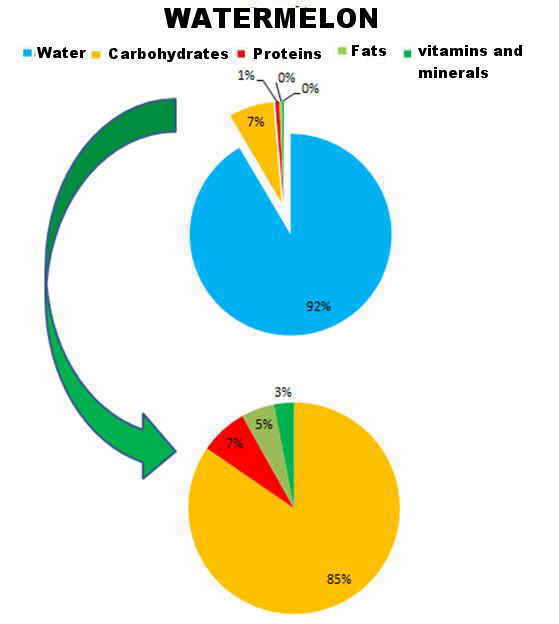
![]() More information on watermelon
More information on watermelon

